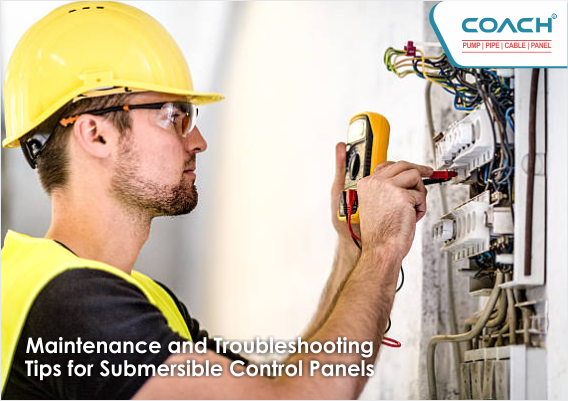Maintenance and Troubleshooting Tips for Submersible Control Panels
- May 8, 2023
- Category :Control Panel & Drives

Introduction:
Submersible control panels play a crucial role in the operation and protection of submersible pumps. These control panels provide electrical control, monitoring, and protection functions, ensuring the efficient and safe operation of the pumping system. To maintain optimal performance and prevent potential issues, regular maintenance and troubleshooting of submersible control panels are essential. In this blog post, we will discuss some valuable maintenance and troubleshooting tips for submersible control panels.
- Regular Inspection:
Perform regular visual inspections of the control panel to identify any signs of damage, loose connections, or overheating. Check for any corrosion on the terminals, control switches, or indicators. Inspect the panel enclosure for any physical damage, water ingress, or pest infestation. By conducting routine inspections, potential issues can be detected early, preventing major failures or system downtime.
- Cleanliness and Environment:
Ensure that the control panel and its surroundings are kept clean and free from debris, dust, and moisture. Clean the control panel enclosure using a dry cloth or a gentle cleaning solution as recommended by the manufacturer. Avoid using excessive water or harsh chemicals that may damage the electrical components. Additionally, maintain proper ventilation and control the humidity levels in the panel room to prevent moisture-related issues.
- Electrical Connections:
Check all electrical connections within the control panel for tightness and secureness. Loose or corroded connections can result in voltage drop, overheating, or even equipment failure. Tighten any loose connections and clean any corrosion using appropriate tools and materials. Consider applying an anti-corrosion compound or terminal protectant to enhance the longevity of the connections.
- Functionality Testing:
Regularly test the functionality of the control panel components, such as relays, contactors, circuit breakers, and overload protection devices. Ensure that all control switches, buttons, and indicators are working correctly. Test the panel’s alarm and safety systems to verify their proper operation. If any abnormalities are detected during testing, promptly address them to prevent potential failures or operational issues.
- Electrical Safety:
Always follow proper safety procedures when working with submersible control panels. Before performing any maintenance or troubleshooting tasks, ensure that the panel is de-energized and isolated from the power source. Use appropriate personal protective equipment (PPE) such as insulated gloves and safety glasses. Adhere to electrical safety guidelines and local regulations to minimize the risk of electrical hazards.
- Documentation and Record Keeping:
Maintain a comprehensive record of all maintenance activities, including inspections, repairs, and component replacements. Document any troubleshooting steps taken and the outcomes. This documentation serves as a valuable reference for future maintenance and helps track the performance and reliability of the control panel over time.
- Professional Assistance:
If you encounter complex issues or are unsure about any troubleshooting steps, it is advisable to seek assistance from a qualified professional or contact the control panel manufacturer. They can provide expert guidance, troubleshoot intricate problems, and ensure that the control panel is functioning optimally.
Conclusion:
Regular maintenance and troubleshooting of submersible control panels are vital for the reliable and safe operation of submersible pump systems. By conducting routine inspections, ensuring cleanliness, checking electrical connections, testing functionality, prioritizing electrical safety, maintaining documentation, and seeking professional assistance when needed, you can prevent potential failures, extend the lifespan of the control panel, and optimize the performance of the submersible pump system. Remember, a well-maintained control panel contributes to the overall efficiency and longevity of your submersible pump system.






